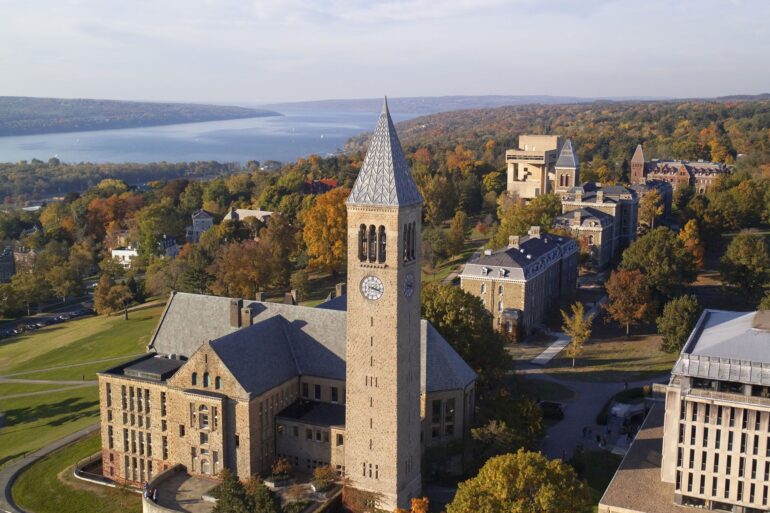TL;DR:
- Cornell University launches the Scientific Artificial Intelligence Center (SciAI Center) with an $11.3 million grant from the Office of Naval Research.
- The center focuses on human-AI collaboration, utilizing mathematics as a universal language.
- AI’s lack of transparency in scientific discovery is addressed through pioneering AI approaches.
- Mathematics is used to derive underlying differential equations that govern physical systems.
- The SciAI Center’s research thrusts include scientific data, operator learning, closure models, and complex systems.
- Materials, turbulence, and autonomy are the primary application areas of focus.
- The center aims to accelerate computational methods and enhance understanding of materials and molecular systems.
- Inclusivity and diversity are prioritized, with student pathway programs to empower underrepresented populations.
- Collaborations with prominent institutions extend the impact of the center’s research.
Main AI News:
In a world on the brink of transformative scientific breakthroughs fueled by artificial intelligence (AI), Cornell University takes the lead with the establishment of the Scientific Artificial Intelligence Center (SciAI Center). This cutting-edge center, backed by an $11.3 million grant from the Office of Naval Research, aims to foster human-AI collaboration, utilizing mathematics as the universal language that drives innovation.
Heading the SciAI Center is Christopher J. Earls, a distinguished professor of civil and environmental engineering at Cornell Engineering. Earls is joined by a team of esteemed co-investigators, including Nikolaos Bouklas, assistant professor of mechanical and aerospace engineering; Anil Damle, assistant professor of computer science; and Alex Townsend, associate professor of mathematics. All investigators are esteemed faculty members at the renowned Center for Applied Mathematics.
While AI systems have shown remarkable proficiency in recognizing patterns and making predictions from vast data sets, researchers express concerns over the lack of transparency in their inner workings. This opacity hinders true scientific discovery, as AI falls short of providing the in-depth mechanistic insights that form the backbone of scientific theories.
“Scientific theories are explanatory stories that offer mechanistic insights into how the universe works,” explains Earls. “These theories not only explain what has been observed but also predict what is yet to be observed. Standard AI is incapable of achieving such extrapolatory power. Hence, our new center will pioneer innovative AI approaches that enable scientific discovery on an unprecedented scale.”
At the heart of the SciAI Center’s methodology lies the use of mathematics as a shared language between humans and machines. Throughout history, mathematics has served as the cornerstone of scientific modeling, allowing researchers to understand and describe the natural world.
Rather than simply relying on AI to predict outcomes using empirical data, the center’s approach involves training AI to articulate itself in the language of calculus and deduce the underlying differential equations that govern physical systems. By doing so, the SciAI Center aims to cultivate an AI-human collaboration that acts as a mentor, unveiling the intricate patterns hidden within the fabric of the natural world.
The SciAI Center is structured around four primary intellectual thrusts: scientific data, operator learning, closure models, and complex systems. These focal points will drive the center’s research endeavors in materials, turbulence, and autonomy – three areas poised for significant advancements through the amalgamation of machine learning and physics-informed algorithms.
Anil Damle emphasizes the potential of blending machine learning techniques with physics-informed algorithms, asserting that it can revolutionize computational methods and enhance our comprehension of materials and molecular systems. Furthermore, Cornell’s commitment to interdisciplinary research makes it an ideal home for such an institution, as researchers from diverse domains can come together and contribute to groundbreaking discoveries.
In addition to its scientific aspirations, the SciAI Center holds a strong commitment to fostering inclusivity and diversity in the field of science and engineering. The center will spearhead a series of student pathway programs aimed at empowering underrepresented populations, equipping them with the skills and knowledge needed to excel in emerging industries driven by AI.
The SciAI Center’s collaborative efforts extend beyond Cornell University, as other prominent institutions, including the United States Naval Academy, the University of California, Santa Cruz, the California Institute of Technology, the University of Cambridge, Brown University, the University of California, Berkeley, and Integer Technologies, join forces to push the boundaries of scientific discovery.
Conclusion:
The establishment of the SciAI Center at Cornell University signifies a significant step towards advancing scientific frontiers. By bridging the gap between mathematics and AI, the center aims to unlock new possibilities for scientific discovery and prediction. The convergence of these fields presents numerous opportunities for the market, including enhanced computational methods, accelerated innovation in materials and molecular systems, and increased diversity and inclusivity in the AI-driven industries of the future. Businesses should take note of this intersection and consider how it can shape their strategies and approaches in the evolving landscape of AI and scientific research.

